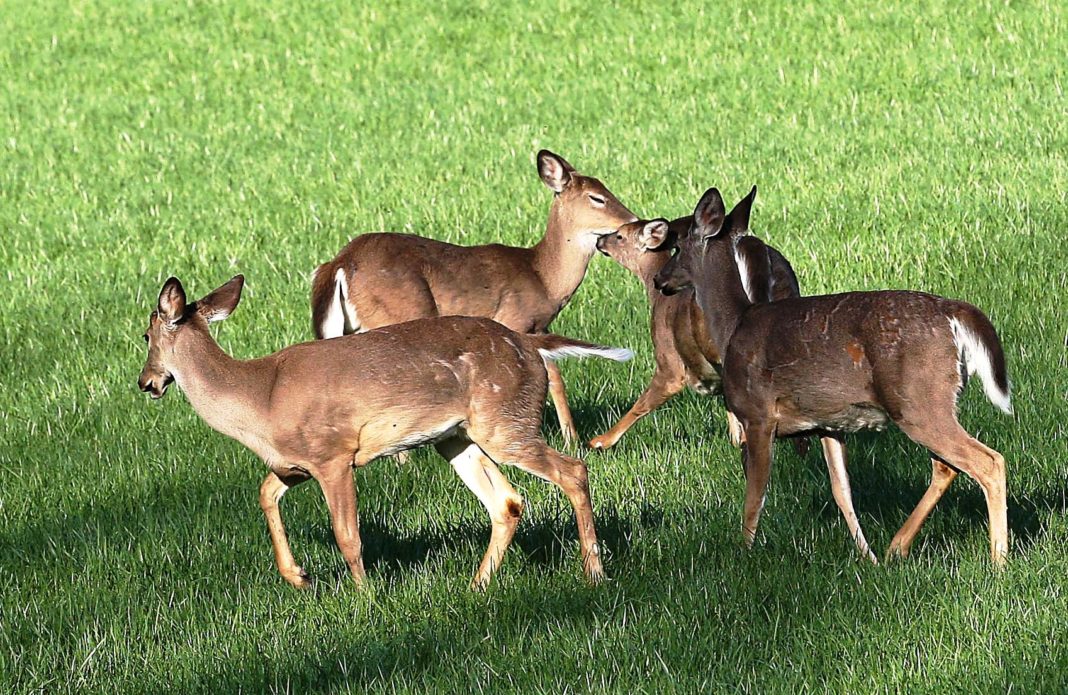 It was a magical morning, as I climbed to the top of the mountain and wound along an old jeep road to my favorite deer stands. With abundant rain in spring and early summer, the road were so overgrown that I had to guess at the trail. As I bailed from my vehicle and walked the final hundred yards, the mid-Atlantic deer woods was as pristine as a freshly vacuumed plush carpet. The knee-high weeds would show deer movement clearly and even the slightest disturbance would stand out. Ironically, there was none; not a trail, track, or dropping. The novice would quickly condemn the lack of deer sign and move on.
It was a magical morning, as I climbed to the top of the mountain and wound along an old jeep road to my favorite deer stands. With abundant rain in spring and early summer, the road were so overgrown that I had to guess at the trail. As I bailed from my vehicle and walked the final hundred yards, the mid-Atlantic deer woods was as pristine as a freshly vacuumed plush carpet. The knee-high weeds would show deer movement clearly and even the slightest disturbance would stand out. Ironically, there was none; not a trail, track, or dropping. The novice would quickly condemn the lack of deer sign and move on.
However, hidden by the brush and undergrowth are tell-tale signs of rutting activity from the previous year. Three- and four-inch diameter trees rubbed and gouged by angry antlers, weathered yet visible to the observant eye. In the region I hunt, deer live in croplands throughout the summer, abandon the mountains completely, and provide a scenario where an excellent hunting location is devoid of sign while crops stand in the fields. Here’s the unusual timeline.

September: As acorns begin to fall and the corn is harvested, deer will periodically return, walk the usual trails, but focus around the best acorn spots.
October: If acorns are abundant, deer will bed and live in the mountains. In a poor mast year, they bed low and continued to raid the fields.
November: As the rut kicks in, bucks follow the does. By the end of the month, most corn has been harvested and deer live in the mountains full time. Hunting pressure in the farm land helps move deer into mountain cover.
December: In late season, deer begin to herd up and seeing a dozen or two together is not uncommon. The rutting continues; in my region, the largest rubs and most aggressive scrapes occurred in December and early January last year.
This stand site has been in my family for three generations and little has changed. Rain, drought, insect infestations, and hunting pressure affect deer movements temporarily, yet the big-picture pattern continues. When scouting new areas, it’s important to focus on the signs you see now. But more importantly, pay close attention to the history of the area and the dynamics of changing cover, food sources, and hunting pressure.



















![The Best Deer Camp Chili [VIDEO] Deer Chili Ingredients, Tomatoes, Chili Spices](/wp-content/uploads/2015/10/Deer-Chili-Deer-Camp-Recipe-218x150.jpg)
![How to Call Elk Early in the Season [VIDEO]](/wp-content/uploads/2016/08/byers003-218x150.jpg)




![Idiots Disturb Hunter: How Would You Have Handled It? [VIDEO]](/wp-content/uploads/2015/10/DSC00110-e1474487693878-100x70.jpg)
![Albino Buck Shocked to Shed His Antlers [VIDEO]](/wp-content/uploads/2015/10/AlbinoDeer-100x70.jpg)